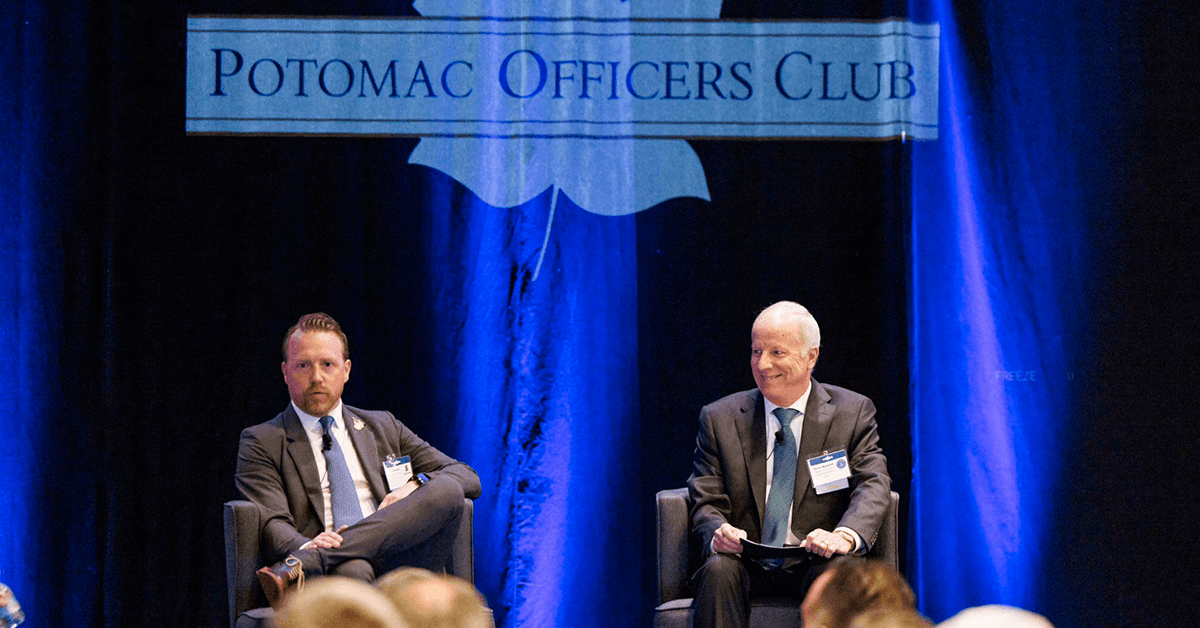Prior to the National Defense Authorization Act for Fiscal Year 2021, 5G technologies at the U.S. Department of Defense were incubated in its Office of the Under Secretary of Defense Research and Engineering, or OUSD(R&E). Symbolically, however, with the passing of the aforementioned annual budget three years ago, 5G projects were transferred to the DOD’s Office of the Chief Information Officer. An executive within the Office of the CIO, Kevin Mulvihill, said that this was meant to signal that “5G was transitioning from our research and experimentation phase to larger scale implementation.”
Mulvihill, who serves as deputy chief information officer for command, control and communications in the Office of the CIO, told an audience of government contractors at the Potomac Officers Club’s 2024 5G Forum on Wednesday that the DOD has a “national imperative” to expand the use of both 5G and open radio access networks, dubbed ORAN. He participated in a fireside chat at the event moderated by Ericsson Senior Vice President Per Wahlén.
Potomac Officers Club events are the premier spaces for GovCon networking and discourse in the Capital region. Save your spot at the fast-approaching 2024 Cyber Summit, where leading decision-makers from the DOD, the Intelligence Community, DHS and more will provide exclusive insights on agencies’ cybersecurity needs and modernization strategies. The event is set for June 6 at the glamorous Ritz-Carlton, Pentagon City.
To do so, Mulvihill laid out three major lines of effort the DOD has agreed upon to achieve its 5G goals.
5G connectivity at military bases
As prompted by the most recent NDAA, the DOD intends to install commercial 5G capabilities at all of its bases by the end of calendar year 2028. Mulvihill said this will not only bolster communications for activities like Combined Joint All-Domain Command and Control, it will also likely assist with retention rates and help prevent losing warfighters and civilian employees alike to the private sector — it’s thus both a personnel issue and a mission-critical imperative.
“When our youth come on board and they’re used to 5G, they can’t be told they’re taking a time warp, back in time, stuck in a barracks somewhere without 5G cable. For our families that move around in remote work, we need 5G and access to commercial,” Mulvihill said.
Unique 5G DOD cases
Mulvihill said the DOD is “just cracking the door open on total use cases” for 5G. A select few are network slicing, enhanced communication, enhanced cybersecurity, censoring and obfuscation of traffic. (Relatedly, ORAN, of which he said Pentagon officials are “big proponents,” is also useful for cybersecurity enhancement, as well as optimizing censoring and monitoring.)
Expeditionary / tactical mentality
To illustrate this third and final tenet, Mulvihill referenced the four U.S. Marines stationed in the first island chain in the Pacific and how the DOD is looking to “take 5G and private networks and send them forward.”
“We’re talking about a capability that will be very difficult for an adversary to deny our ability to communicate and our ability to plan and execute. I think when that starts to come together and we start to use that as a service and our adversaries take a look at that, I think that is going to give them significant reason to pause because they can’t operate that way,” Mulvihill reasoned.
Rather than roll these initiatives out sequentially, Mulvihill said they will be simultaneously enacted. He compared the rollout to a number of brush fires being ignited at once, rather than a single fire that spreads.





